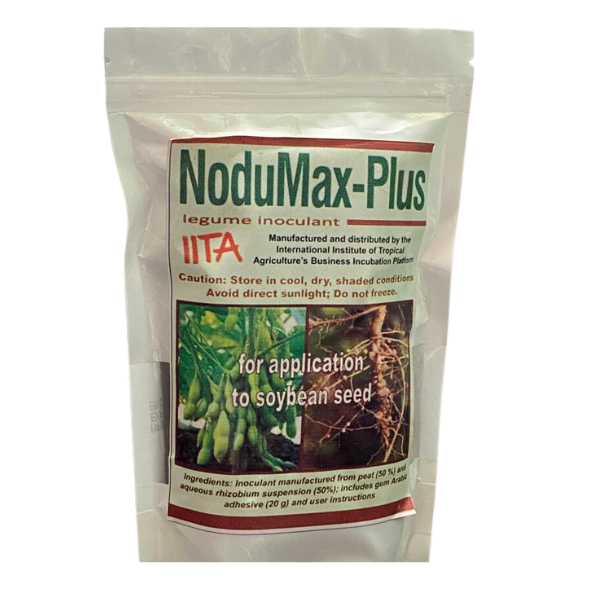Soybean inoculants offer a range of advantages to farmers in Ghana. By promoting nitrogen fixation, these inoculants enhance the availability of this essential nutrient for soybean plants, leading to improved crop yield. Additionally, soybean inoculants contribute to the overall health of the soil, fostering a sustainable agricultural ecosystem. Let’s explore the topic further through the following headings:
What Are Soybean Inoculants?

Soybean inoculants are formulations containing beneficial bacteria known as Rhizobia. These bacteria have a symbiotic relationship with soybean plants, specifically aiding in nitrogen fixation. They form nodules on the roots of soybean plants, converting atmospheric nitrogen into a usable form for the plants. This process enriches the soil with nitrogen, a vital nutrient for plant growth and development.
The Importance of Nitrogen Fixation
Nitrogen is an essential element required for healthy plant growth. However, soybeans cannot directly access atmospheric nitrogen. This is where soybean inoculants come into play. The Rhizobia bacteria in the inoculants establish a symbiotic relationship with the soybean plants, allowing them to convert atmospheric nitrogen into a form the plants can utilize. Through nitrogen fixation, soybean inoculants improve plant growth, biomass production, and overall yield.
Enhancing Soil Health
Soybean inoculants not only benefit soybean plants but also contribute to the health of the soil. By increasing the nitrogen content in the soil, these inoculants improve its fertility and reduce the need for synthetic nitrogen fertilizers. Furthermore, the bacteria in soybean inoculants enhance the soil’s microbial activity, promoting a balanced and sustainable ecosystem.
Selecting the Right Soybean Inoculant

Choosing the appropriate soybean inoculant is crucial for maximizing its benefits. Consider the specific soybean variety, local soil conditions, and the strain compatibility of the inoculant with the soybean plants. Conduct soil tests to determine the presence and effectiveness of native Rhizobia strains. This information will guide you in selecting the most suitable inoculant for your soybean crops.
Application Methods
Proper application methods are essential to ensure effective inoculation. There are two primary methods for applying soybean inoculants: seed treatment and soil application. Seed treatment involves coating the soybean seeds with the inoculant, while soil application involves applying the inoculant directly to the soil before planting. Both methods have their advantages, and the choice depends on factors such as farm size, equipment availability, and farming practices.
Timing of Inoculation
Timing plays a crucial role in the success of soybean inoculation. It is recommended to inoculate soybean seeds immediately before planting to ensure the bacteria remain viable. Delayed inoculation or prolonged exposure to unfavorable conditions can reduce the survival rate of the Rhizobia bacteria, limiting their effectiveness in nitrogen fixation.
Storage and Shelf Life
To maintain the viability of soybean inoculants, proper storage is essential. Store the inoculants in a cool, dry place away from direct sunlight. Follow the manufacturer’s instructions regarding storage temperature and shelf life. It is important to note that the effectiveness of inoculants may decrease over time, so it is advisable to use fresh inoculants whenever possible.
Preparing the Soil
Preparing the soil is a critical step before inoculating soybean seeds. Ensure the soil is adequately tilled and free from weeds, debris, and large clumps. Optimal soil conditions create a favorable environment for the establishment of nodules and enhance the overall effectiveness of the inoculant.
Seed Treatment
Seed treatment involves coating soybean seeds with the inoculant. This method ensures direct contact between the Rhizobia bacteria and the roots of the soybean plants. To treat the seeds, mix them with the recommended amount of inoculant, ensuring thorough coverage. Follow the manufacturer’s instructions for the appropriate seed treatment technique.
Inoculant Dosage
Determining the correct inoculant dosage is crucial for successful inoculation. The recommended dosage depends on factors such as the specific inoculant product, soybean variety, and prevailing soil conditions. Consult the manufacturer’s guidelines or seek advice from agricultural experts to determine the appropriate dosage for your soybean crops.
Inoculant Application Techniques
When applying the inoculant, ensure thorough coverage to maximize its effectiveness. For seed treatment, use mechanical seed treaters or commercial seed coating services to ensure uniform coating. When applying the inoculant to the soil, distribute it evenly across the planting area. This ensures that the Rhizobia bacteria come into contact with the soybean roots, promoting successful nitrogen fixation.
Maximizing Inoculation Success
To maximize the success of soybean inoculation, certain practices can be implemented. Maintain proper soil moisture levels, as excessive dryness or waterlogging can hinder bacterial survival. Avoid applying fungicides or insecticides with the inoculant, as they may have adverse effects on the bacteria. Additionally, practice crop rotation to prevent the build-up of diseases that may affect soybean nodulation.
Monitoring and Evaluation
Regular monitoring and evaluation of the inoculated soybean crops are necessary to assess the success of the inoculation process. Monitor the growth and development of the plants, as well as the presence and color of the nodules on the roots. If any abnormalities or issues arise, consult agricultural experts to diagnose and address the problem promptly.
Common Challenges and Troubleshooting
Despite the numerous benefits of soybean inoculants, certain challenges may arise. Common challenges include poor nodulation, inadequate bacterial survival, and variations in strain effectiveness. If faced with any issues, consult agricultural experts or local extension services for troubleshooting assistance.
Safety Precautions
When working with soybean inoculants, it is important to follow safety precautions. Wear appropriate protective clothing,

Leave A Comment